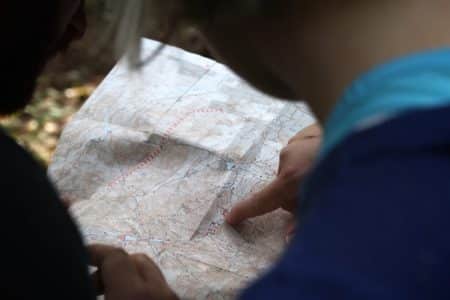Coming out of COVID-19 lockdowns and closures can be rough, but with eased restrictions and summer weather finally here, more individuals and families are packing up and traveling while the season permits.
Whether you’re traveling to Newfoundland, Miami or Taiwan, most vacations include a road trip. Planning the holiday consists of knowing where you want to go, and how you want to get there. Plan with budget, time constraints, navigation and costs in mind.
Booking ahead for flights, hotels and insurance is usually cheaper, and planning your route ahead can save delays and headaches. Take construction, maintenance, closures and potential delays into account. Here are 3 tips for planning your route:
- Using a GPS navigator on a smartphone or device helps you stay connected and in-the-know as you go.
Download an offline map of the areas that you will be traveling to. Using a GPS navigator like Google Maps (downloadable from Google Play or the Apple App Store) enables ease of navigation with few exceptions. It helps give you a rough estimate of time and distance, with multiple route options, and the ability to remove highways, toll routes and ferries from navigation options. Build in time for contingencies and delays. On highways, ensure you are in the lane it tells you to be in, pay attention to where the exit is (usually on the right), and move towards the right lane several hundred metres before nearing it. This is a helpful tool, but you need to use judgment and watch the signs as well, while being attentive at all times.
- Think of every cost and foreseeable expense. Plan with an itinerary for each day.
Parking costs are oftentimes forgotten, but with a little research of where to park and what is around your destination, you can save on excessive parking fees. Inquire whether your accommodations incorporate free parking, and how far you will need to walk from activity to activity to budget wisely. This is also where you need to plan far in advance for exceptionally cheaper flights, car rentals, rental properties or hotels, activities and potential touring, as well as insurance and food expenses. The more you plan, the fewer unwanted surprises.
- For longer road trips, plan for breaks.
If you are driving for more than 3 hours, plan on taking breaks. Whether alone or with another driver, it is advisable to bring water and plan for stops. You also want to ensure that you are parking in safe locations. If possible, use a car with a trunk or an SUV with a shelf to block trunk belongings. You can also use a sheet covering, or something similar, to cover your belongings when you need to leave the car unattended. Bring a jump-starter kit, because you never know where you will be and forgetting to turn the lights off just once can completely drain a battery. A dash-cam can be helpful in sticky situations.
Finally, it’s best to remember:
● Get a good night’s sleep prior to your trip
● Take regular breaks in well-lit areas
● If necessary, get a coffee or take a 20-minute power nap at a designated rest area
● Avoid excessive unhealthy snacks and beverages. Water is good.





